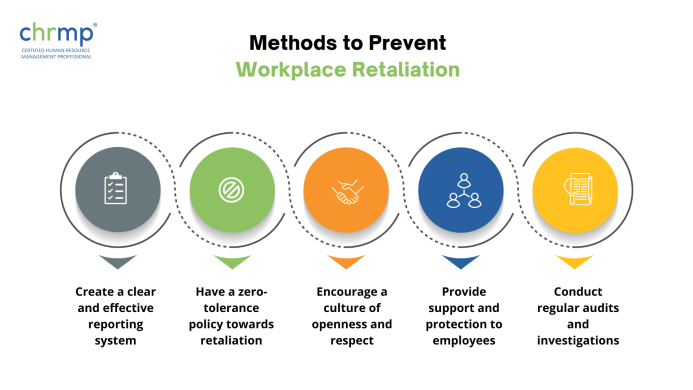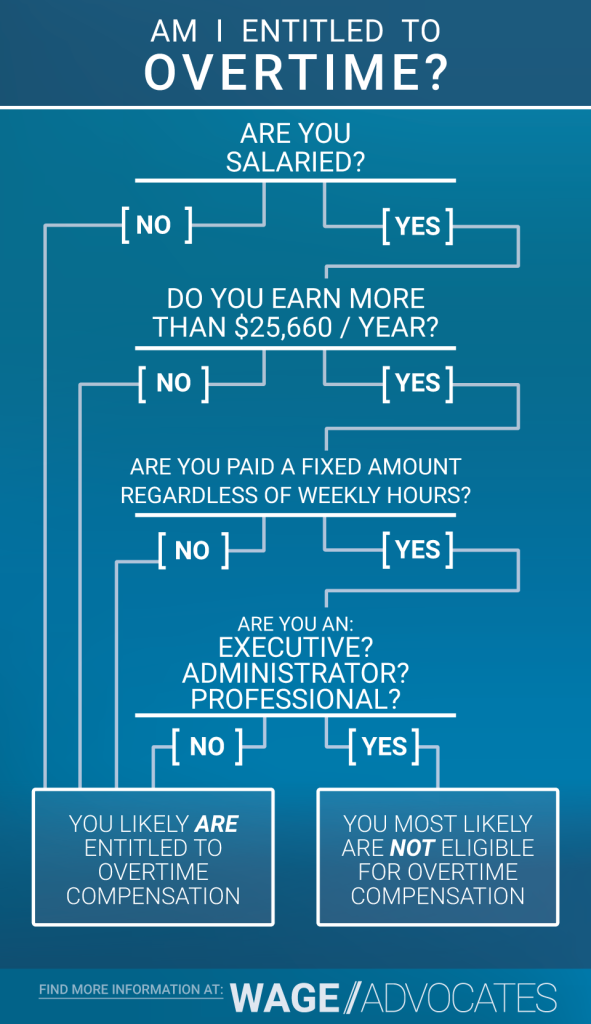
Employee Rights During Layoffs: Your Essential Guide to Protecting Yourself
Facing a layoff can be one of the most stressful and uncertain times in an employee’s professional life. Beyond the immediate shock of job loss, there’s often a whirlwind of questions about what comes next, what you’re entitled to, and how to protect yourself. Many people assume that when a company downsizes, employees are left with no recourse. However, that’s often not the case.
Understanding your employee rights during layoffs is crucial. Knowing what you’re legally entitled to, what benefits you can access, and what protections exist can empower you to navigate this challenging period with confidence and ensure you’re treated fairly. This comprehensive guide will break down your key layoff rights in easy-tounderstand language, helping you secure your future.
What Exactly is a Layoff? Understanding the Difference
Before diving into your rights, it’s important to understand what a layoff is, and how it differs from being fired "for cause."
- Layoff: A layoff typically occurs when an employer eliminates a position due to business reasons, such as financial difficulties, restructuring, a merger, a reduction in force, or a lack of work. It’s usually not a reflection of your performance.
- Fired for Cause: This means your employment was terminated due to your performance, misconduct, or violation of company policy.
The distinction is important because your eligibility for certain benefits, like unemployment, can depend on why your employment ended. Generally, if you’re laid off due to no fault of your own, you have more rights and are more likely to qualify for unemployment benefits.
Your Final Paycheck and Accrued Benefits: What You’re Owed
One of the most immediate concerns after a layoff is getting your final pay and understanding what happens to your benefits.
1. Final Paycheck
- State Laws Vary: The timing of your final paycheck after a layoff is dictated by state law, not federal law. Some states, like California, require immediate payment on your last day. Others may allow a few days or the next scheduled payday.
- What’s Included: Your final paycheck should include all wages earned up to your last day of employment, including any overtime.
2. Accrued Paid Time Off (PTO), Vacation, and Sick Leave
- It Depends on the State & Company Policy: Whether your employer must pay out unused vacation or PTO often depends on your state’s laws and the company’s specific policy.
- States Requiring Payout: Some states (e.g., California, Illinois, Massachusetts) consider accrued vacation pay as earned wages that must be paid out upon termination, regardless of company policy.
- States Where Policy Governs: In other states, if the company policy says unused PTO is not paid out, they may not have to.
- Sick Leave: Sick leave is less commonly required to be paid out than vacation time. Check your state laws and company policy.
- Check Your Employee Handbook: Always refer to your company’s employee handbook or policies regarding PTO payout.
3. Health Insurance (COBRA)
- What is COBRA? The Consolidated Omnibus Budget Reconciliation Act (COBRA) is a federal law that allows certain former employees, retirees, spouses, and dependent children to temporarily continue their health coverage at group rates.
- How it Works: If your employer offers a group health plan and has 20 or more employees, they are typically required to offer you COBRA. You will receive an election notice explaining your options.
- The Cost: While COBRA allows you to keep your existing plan, you will likely have to pay the full premium yourself, plus a small administrative fee (up to 102% of the cost). This can be significantly more expensive than what you paid as an active employee, as your employer no longer contributes to the premium.
- Duration: COBRA coverage typically lasts for 18 months, though it can extend longer in certain situations.
- Alternatives: Explore options on the Health Insurance Marketplace (Healthcare.gov) or through your state’s exchange, as you might qualify for subsidies that make these plans more affordable than COBRA. Losing your job is a "qualifying life event" that allows you to enroll outside of the regular open enrollment period.
4. Retirement Plans (401k, Pension, etc.)
- Your Money is Yours: Funds you’ve contributed to a 401(k) or similar retirement plan are always 100% yours.
- Vesting: For employer contributions (like matching funds), you must be "vested" to keep them. Vesting means you’ve worked for the company for a certain period (e.g., 3-5 years). Check your plan documents for your vesting schedule.
- Options: You typically have a few options for your 401(k) balance:
- Leave it with your former employer’s plan (if allowed).
- Roll it over into a new employer’s plan.
- Roll it over into an Individual Retirement Account (IRA).
- Cash it out (generally not recommended due to taxes and penalties).
Severance Pay: Is It Required?
Severance pay is often a significant part of a layoff package, but it’s one of the most misunderstood.
Is Severance Required by Law?
- Generally, No: In most cases, federal law does not require employers to offer severance pay. It is typically a voluntary benefit offered by employers.
- Exceptions:
- Employment Contract: If your employment contract or collective bargaining agreement (union contract) specifies severance terms.
- Company Policy: If the company has a written policy promising severance under certain conditions.
- WARN Act: In specific mass layoff situations (discussed below), severance might be offered in lieu of proper notice.
- Why Companies Offer It: Employers often offer severance to:
- Ease the transition for employees.
- Maintain a positive company reputation.
- Require employees to sign a severance agreement, which typically includes a waiver of their right to sue the company.
Severance Agreements and Waivers
If you are offered severance, you will almost certainly be asked to sign a severance agreement. This is a legally binding contract.
- What It Often Includes:
- The amount of severance pay and payment schedule.
- Continuation of benefits (e.g., health insurance for a period).
- A release of claims: This is the most critical part. By signing, you typically agree to give up your right to sue the company for almost any reason related to your employment or termination, including claims of discrimination, wrongful termination, or unpaid wages (with some exceptions).
- Non-disparagement clauses (agreeing not to say negative things about the company).
- Confidentiality clauses.
- Non-compete or non-solicitation clauses (less common in severance agreements but can appear).
- Your Right to Review: You should never feel pressured to sign a severance agreement on the spot.
- Time to Review: The Older Workers Benefit Protection Act (OWBPA) requires employers to give employees age 40 and older at least 21 days to review a severance agreement (or 45 days if part of a group layoff) and 7 days to revoke it after signing. Even if you’re under 40, it’s good practice to demand adequate time.
- Seek Legal Advice: It is highly recommended to have an employment attorney review any severance agreement before you sign it. They can explain what rights you’re giving up, negotiate better terms, and ensure the agreement is fair and legal.
Unemployment Benefits: Your Safety Net
Unemployment insurance is a vital safety net designed to provide temporary financial assistance to workers who lose their jobs through no fault of their own.
Eligibility for Unemployment Benefits
- Laid Off, Not Fired for Cause: Generally, you must have been laid off or terminated for reasons other than misconduct. If you were fired for cause (e.g., gross negligence, theft), you might be disqualified.
- Able and Available to Work: You must be physically able to work and actively seeking new employment.
- Sufficient Work History: Each state has requirements for how much you must have earned or how long you must have worked in a "base period" to qualify.
- No Fault of Your Own: This is the core principle.
How to Apply for Unemployment
- State-Specific: Unemployment benefits are administered at the state level.
- Contact Your State’s Unemployment Office: You can usually apply online through your state’s Department of Labor or equivalent agency.
- Required Information: You’ll need information like your Social Security number, employment history (including dates and addresses of previous employers), and reasons for separation.
- Timeliness: Apply as soon as possible after your layoff. There might be a waiting period (typically one week) before benefits begin.
The WARN Act: Notice for Mass Layoffs
The Worker Adjustment and Retraining Notification (WARN) Act is a federal law that requires certain employers to provide advance notice of mass layoffs or plant closings.
Who Does the WARN Act Apply To?
- Employers: Businesses with 100 or more full-time employees.
- Events:
- Plant Closing: If a facility or operating unit is shut down, resulting in 50 or more employees losing their jobs within a 30-day period.
- Mass Layoff: If 500 or more employees are laid off within a 30-day period, OR if 50 to 499 employees are laid off and these layoffs constitute at least 33% of the employer’s active workforce.
What Does the WARN Act Require?
- 60-Day Notice: Employers covered by WARN must provide at least 60 calendar days’ advance written notice to affected employees (or their union representatives), the state dislocated worker unit, and the chief elected official of the local government.
- Exceptions: There are limited exceptions to the 60-day notice requirement (e.g., unforeseeable business circumstances, faltering company, natural disaster), but employers must still provide as much notice as practicable.
- Consequences of Non-Compliance: If an employer violates the WARN Act by failing to provide proper notice, affected employees may be entitled to back pay and benefits for the period of violation (up to 60 days).
Protection Against Discrimination During Layoffs
While layoffs are often for legitimate business reasons, employers cannot use a layoff as a pretext for discrimination. Federal and state laws protect employees from discrimination based on certain characteristics.
Protected Classes Include (but are not limited to):
- Race, Color, Religion, Sex (including pregnancy, sexual orientation, gender identity), National Origin: Protected under Title VII of the Civil Rights Act of 1964.
- Age: Protected under the Age Discrimination in Employment Act (ADEA) for individuals age 40 and older.
- Disability: Protected under the Americans with Disabilities Act (ADA).
- Genetic Information: Protected under the Genetic Information Nondiscrimination Act (GINA).
- Military Status: Protected under the Uniformed Services Employment and Reemployment Rights Act (USERRA).
- State-Specific Protections: Many states and localities have additional protected classes (e.g., marital status, veteran status, political affiliation, criminal history, credit history, height/weight).
Red Flags That Might Indicate Discrimination
- Disproportionate Impact: If a layoff disproportionately affects employees of a certain age, race, gender, or other protected characteristic without a clear, non-discriminatory reason. For example, if only older workers are laid off, or primarily women.
- Sudden Performance Issues: If you were previously praised or had good performance reviews, but are suddenly told your performance is poor right before a layoff.
- Retaining Less Qualified Employees: If you are laid off, but a less qualified or experienced employee outside of your protected class is retained for a similar role.
- Discriminatory Comments: Any comments made by management that suggest a bias against a protected group.
- Lack of Clear Criteria: If the selection process for layoffs seems arbitrary or lacks transparent, job-related criteria.
What to Do If You Suspect Discrimination
- Document Everything: Keep records of performance reviews, emails, comments, and any other relevant information.
- Consult an Attorney: An employment attorney can assess your situation and advise you on the strength of your claim.
- Contact the EEOC or State Agency: You can file a charge of discrimination with the Equal Employment Opportunity Commission (EEOC) (for federal laws) or your state’s fair employment practices agency. There are strict deadlines for filing, so act quickly.
Retaliation: Protecting Your Rights After a Layoff
Even after a layoff, you are protected from retaliation for exercising your legal rights. Retaliation occurs when an employer takes adverse action against an employee for engaging in a legally protected activity.
Examples of Protected Activities:
- Filing a complaint of discrimination.
- Reporting workplace safety violations.
- Requesting FMLA leave.
- Participating in an investigation against the employer.
- Asking about or discussing wages.
- Refusing to engage in illegal activities.
How Retaliation Can Manifest After a Layoff:
While you’re no longer employed, an employer could still retaliate by:
- Giving a negative job reference.
- Attempting to interfere with your ability to find new employment.
- Filing a baseless lawsuit against you.
If you believe your former employer is retaliating against you for exercising your rights, document the actions and seek legal counsel immediately.
Understanding Your Rights Before Signing Anything
This cannot be stressed enough: do not sign any documents related to your layoff without fully understanding them.
- Read Carefully: Take the time to read every word of any document presented to you, especially severance agreements or releases.
- Don’t Feel Pressured: Employers cannot force you to sign immediately. Demand time to review.
- Ask Questions: If anything is unclear, ask for clarification in writing.
- Consult an Attorney: This is the most important step. An experienced employment lawyer can:
- Explain the legal implications of what you’re signing.
- Identify any clauses that might waive important rights.
- Advise you on whether the offer is fair.
- Negotiate better terms on your behalf (e.g., higher severance, removal of restrictive clauses).
- Help you understand if you have any potential claims against the company (e.g., discrimination, unpaid wages) that you would be giving up.
What to Do If You Believe Your Rights Have Been Violated
If you suspect your employer has violated your employee rights during a layoff, take the following steps:
- Document Everything: Keep detailed records of dates, times, conversations, emails, and any documents related to your layoff. Note down who said what, when, and where.
- Gather Evidence: Collect performance reviews, employment contracts, company policies, pay stubs, and any communication regarding your layoff.
- Consult an Employment Attorney: This is your best first step. An attorney specializing in employment law can:
- Assess the specifics of your situation.
- Explain your legal options.
- Help you understand the strength of any potential claims.
- Guide you through the process of filing a complaint or lawsuit.
- Contact Relevant Government Agencies:
- EEOC (Equal Employment Opportunity Commission): For federal discrimination claims.
- State Fair Employment Practices Agency: For state-specific discrimination claims.
- State Department of Labor: For issues related to final pay, wages, or WARN Act violations.
- State Unemployment Office: For unemployment benefit issues.
Conclusion: Empower Yourself with Knowledge
Losing your job through a layoff is undoubtedly a difficult experience, but it doesn’t mean you’re powerless. Understanding your employee rights during layoffs is the first and most crucial step in protecting your interests and ensuring a fair transition.
From securing your final pay and understanding your benefits to knowing your protections against discrimination and your rights under the WARN Act, being informed can make a significant difference. Don’t hesitate to seek professional legal advice if you have any doubts or believe your rights have been violated. By being proactive and knowledgeable, you can navigate this challenging period more effectively and set yourself up for future success.
Disclaimer: This article provides general information about employee rights during layoffs and is not intended as legal advice. Laws vary by state and individual circumstances. It is always recommended to consult with a qualified employment attorney for advice specific to your situation.



Post Comment